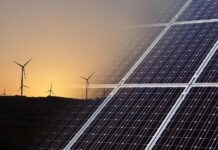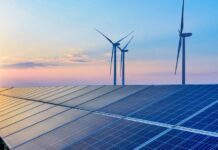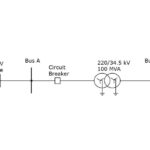
Global waste generation has surged due to rapid urbanisation, industrial expansion, and population growth. According to the World Bank’s ‘What a Waste 2.0’ report, global Municipal Solid Waste (MSW) generation is projected to reach 3.40 billion metric tons by 2050, up from 2.01 billion metric tons in 2018. Improper waste disposal contributes to multiple ecological crises:
- Air Pollution: Open burning of waste releases dioxins, furans, and particulate matter (PM2.5 & PM10), contributing to respiratory diseases and climate change.
- Land Degradation: Approximately 33% of global waste is disposed of in open dumps, leading to soil contamination and reduced agricultural productivity.
- Water Pollution: Leachate from landfills pollutes groundwater, affecting over 1.2 billion people globally.

Greenhouse Gas (GHG) Emissions: Landfills emit 20% of global methane (CH4) emissions, a potent greenhouse gas with a 25-times higher global warming potential than CO2 over a 100-year period.
India, the world’s most populous country, generates over 62 million metric tons of solid waste annually, with only 30% effectively processed. The rest is either dumped in landfills or burned, exacerbating environmental degradation. Given the country’s growing energy needs, a sustainable approach to waste management is imperative.

Photo Courtesy: Indian Express
India’s landfill sites, such as Ghazipur (Delhi), Deonar (Mumbai), and Kodungaiyur (Chennai), are overburdened, covering over 1,500 hectares of land. Many of these landfills have surpassed their capacity, leading to frequent landfill fires, emitting hazardous gases such as methane (CH4), sulfur dioxide (SO2), and Volatile Organic Compounds (VOCs).
WTE technologies present a two-fold solution
- Energy Generation: Waste-to-Energy (WTE) plants have the potential to generate up to 5,300 MW of electricity annually from India’s municipal waste. (Refer figure 1)
- Land Reclamation: Effective WTE implementation can reduce landfill dependency by 40-50%, freeing up urban land for redevelopment. (Refer figure 2)
Globally, countries such as Sweden, Japan, Germany, and Singapore have successfully adopted integrated WTE strategies, diverting 80-90% of waste from landfills and contributing significantly to their national energy grids. India can leverage these models while customisoing them to its socio-economic and infrastructural landscape.
Waste management & WTE technologies
Waste generation can be broadly categorized into different types based on its composition, source, and potential for energy conversion. Understanding these waste streams is essential for identifying suitable Waste-to-Energy (WTE) technologies.
Municipal Solid Waste (MSW):
- Comprises household and commercial waste, including biodegradable, plastic, metal, glass, and paper waste.
- India generates 62 million metric tons of MSW annually, with only 30% effectively processed.
Industrial Waste:
- This includes process residues from manufacturing, chemical, textile, and metallurgical industries.
- India produces 100 million metric tons of industrial waste annually, with a high fraction of hazardous and non-biodegradable components.
Agricultural and Biomass Waste:
- This includes crop residues, livestock waste, and food processing by-products.
- India generates over 500 million metric tons of agricultural waste annually, with significant portions burned in open fields (e.g., stubble burning in Punjab and Haryana).
E-Waste (Electronic Waste):
- This includes discarded electrical and electronic appliances, containing valuable and toxic materials.
- India is the third-largest producer of e-waste globally, generating 3.2 million metric tons annually.

Hazardous and Biomedical Waste:
- This includes medical, chemical, and radioactive waste, requiring specialised treatment.
- India generates 780,000 metric tons of biomedical waste annually, with 40% inadequately disposed of.
Existing Waste-to-Energy Technologies:
The Waste-to-Energy (WTE) sector encompasses several established and emerging technologies that convert various types of waste into usable energy forms. (Refer figure 3)
- Incineration and Thermal Power Generation: Incineration is the combustion of waste materials at high temperatures (850-1,200°C) to reduce waste volume and generate electricity. The heat produced is used to generate steam, which drives turbines to produce electricity. (Refer figure 4)

- Anaerobic Digestion and Biogas Production: Anaerobic Digestion (AD) is a biological process where microorganisms break down organic waste in the absence of oxygen, producing biogas (CH4+ CO2) and digestate (nutrient-rich fertiliser).
- Landfill Gas Recovery Systems: Landfills generate methane (CH4) as organic waste decomposes under anaerobic conditions. Landfill gas (LFG) recovery systems capture and process this methane for energy production.
- Pyrolysis and Gasification: Both pyrolysis and gasification involve thermal decomposition of waste in the absence (or limited presence) of oxygen. (Refer figure 5)

– Pyrolysis: This process converts waste into bio-oil, syngas, and biochar.
– Gasification: This process produces syngas (CO + H4), which can be used for electricity generation or synthetic fuel production.
- Plasma Arc Gasification: Plasma Arc Gasification (PAG) uses ultra-high temperatures (3,000–10,000°C) generated by plasma torches to break down waste into syngas and vitrified slag (a glass-like, non-toxic byproduct). (Refer figure 6.)

Innovative and Emerging Technologies:
While conventional WTE technologies; such as incineration, anaerobic digestion, and gasification; have proven effective, ongoing research is unlocking new, innovative methods to convert waste into energy more efficiently. These emerging technologies focus on sustainability, higher energy yield, and reduced environmental impact.
- Hydrothermal Carbonization (HTC): Hydrothermal Carbonisation (HTC) is a thermochemical process that converts wet organic waste (food waste, sewage sludge, agricultural residues) into hydrochar (bio-coal) under moderate temperatures (180–250°C) and high pressure (2–10 MPa) in a water-rich environment. (Refer figure 7)

- Microbial Fuel Cells (MFCs): Microbial Fuel Cells (MFCs) utilise electrogenic bacteria that break down organic matter and release electrons, which can be harnessed to generate electricity. The process occurs in an anode and cathode chamber, separated by a proton exchange membrane. (Refer figure 8)

Photo Courtesy: LinkedIn
- Algae-Based Biofuel from Wastewater: Algae-based biofuel production involves cultivating algae in wastewater, which absorbs nutrients and organic matter while generating lipid-rich biomass. This biomass is then processed into biofuels (biodiesel, bioethanol, and biogas).
- Artificial Photosynthesis for Waste Conversion: Artificial Photosynthesis (AP) is an advanced technique that mimics natural photosynthesis to convert CO2 and organic waste into clean energy using solar energy-driven catalysts.
Current waste management practices & challenges
Waste management varies widely across countries, with developed nations adopting advanced waste treatment and circular economy models, while developing nations struggle with inefficient collection, segregation, and treatment.
Waste Management in India:
Landfilling: 80-85% of India’s waste is dumped in open landfills, such as Ghazipur (Delhi) and Deonar (Mumbai), leading to environmental hazards.
- Composting & Biogas Production: Only 10% of organic waste is composted or converted into biogas due to a lack of large-scale infrastructure.
- Recycling & Informal Sector Contribution: India has a 28% recycling rate, largely driven by the informal sector (ragpickers, small recycling units).
- Incineration & Waste-to-Energy Plants: India has 14 operational WTE plants, but many struggle due to low calorific value and poor waste segregation.
Global Best Practices:
- Sweden & Germany: Less than 1% of waste is landfilled, with 99% diverted to recycling and WTE plants.
- Singapore: Integrated waste management model, where waste incineration supplies 3% of the nation’s energy needs.
- China: World’s largest WTE capacity, with 400+ incineration plants producing 8,750 MW of electricity annually.
Challenges in Waste Management:
India’s current waste management system faces several roadblocks:
- Inefficiency in Waste Collection & Processing: 70% of MSW is uncollected or improperly managed, leading to landfill overflows and pollution.
- Lack of Waste Segregation at Source: Only 30% of Indian households practice source segregation, making WTE processes less efficient.
- High Operational & Capital Costs: WTE plants require high capital investment ($30-$50 million per plant), with slow return on investment (ROI).
- Public Resistance & Environmental Concerns: Poorly managed incineration releases toxic emissions (dioxins, NOx, SOx), leading to public opposition.
- Regulatory & Policy Gaps: India lacks a national-level integrated waste management policy, leading to fragmented implementation.
To be continued…

Dr. Rajesh Kumar Arora obtained his B. Tech. and M.E. degrees in Electrical Engineering from Delhi College of Engineering, University of Delhi. He completed his PhD in grounding system design from UPES, Dehradun. He is also a certified Energy Manager and Auditor and has worked in 400kV and 220kV Substations for more than 14 years in Delhi Transco Limited (DTL). He has also worked as Deputy Director (Transmission and Distribution) in Delhi Electricity Regulatory Commission (DERC). Presently he is working in D&E (Design and Engineering) department of DTL.

Divyanshu Arora is Final Year Electronics and Communication Engineering student at Bharati Vidyapeeth’s College of Engineering, Delhi. He has a specialization in Renewable Energy from Coursera.com and he truly believes in the power of continuous learning. He even has earned specializations in Data Analytics, Fintech, IT Support and Machine Learning from Coursera. Embracing the digital landscape, he has also completed the Google Digital Garage’s Digital Marketing Certificate, equipping himself with the tools to thrive in the online realm.



















